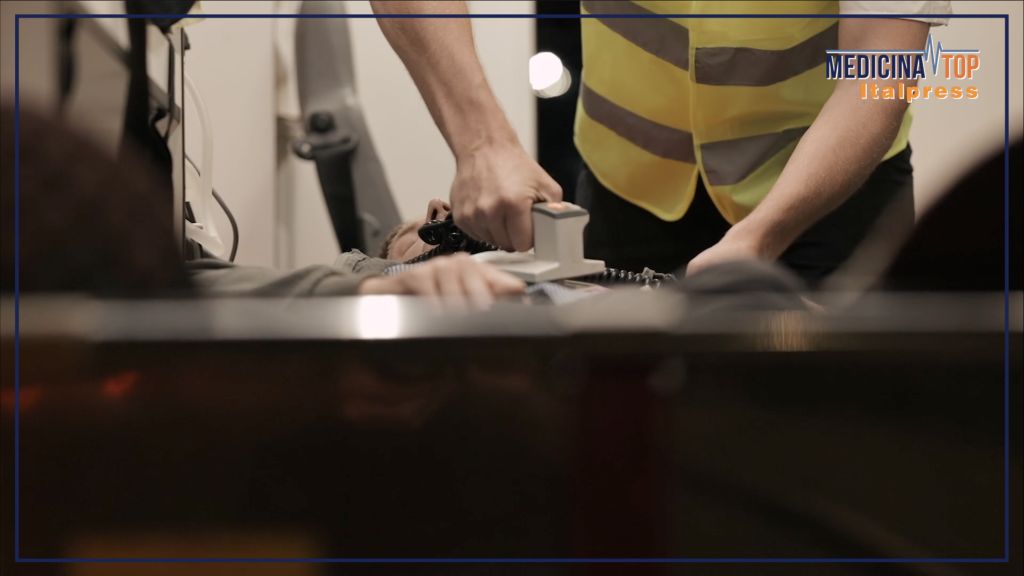MILAN (ITALPRESS) – Sudden cardiac death is a tragic and unexpected event that occurs when an apparently healthy person dies suddenly. Sudden cardiac death is when death occurs within an hour of the onset of the first symptoms. Despite significant advances in cardiology, there are still 4-5 million deaths worldwide each year, 50,000 in Italy. As noted by the Rare Disease Observatory, the incidence of sudden death increases with age. It is low during childhood and pediatric age, one case per one hundred thousand people per year, but then reaches about 50 cases in individuals aged 50 to 60 years. These are some of the topics discussed by Paolo Della Bella, chief of the Operative Unit of Arrhythmology and Cardiac Electrophysiology at IRCCS San Raffaele Hospital in Milan, interviewed by Marco Klinger, for Medicina Top, a TV format of the Italpress news agency.”Cardiac arrest is an electrical phenomenon,” he began, “The heart does not stop beating because it stops, but electrically it fibrillates, and this electrical phenomenon is followed by a mechanical handicap that can be fatal within minutes if perfusion to organs, such as the brain, is not restored. There are two prevailing situations for sudden cardiac deaths, “The most striking type is during intense physical activity, such as sudden deaths on the field of athletes,” he pointed out. “The second is the more insidious one, it is cardiac arrest. Sudden death at home is the most prevalent at the level of cardiac arrest, which is why resuscitation is taught to family members, or in public places such as stations, airports, cinemas.” Sudden deaths, however, often do not affect healthy people, but only apparently not suffering from heart disease: “The apparently should be emphasized,” he pointed out, “The heart does not go into fibrillation so suddenly, usually there is a misrecognized structural heart disease, this makes it necessary to have a policy of preventing situations that can lead to this. The patient who has heart problems ends up in a specific department, but the high-risk character constitutes a very small part of those who die from sudden cardiac death,” the professor recalled. “Most people have silent problems, and prevention is crucial. Smoking, sedentary lifestyle, obesity and diabetes suggest to investigate further with an electrocardiogram and other investigations that help so much,” Della Bella suggested. “Sometimes, then, situations of extreme emotionality, accompanied by release of tons of adrenaline, can trigger deadly arrhythmias. And on signs not to be underestimated: “There are situations that sneak up on you, they are not all striking. Pain is not always typical, it can be in the chest but also in the limbs, so doing one more electrocardiogram versus one less I think is better,” he reiterated. “Familiarity for sudden deaths is very important. And risk factors should not be forgotten; on the other hand, an exercise electrocardiogram is within everyone’s reach now.” On the importance of the defibrillator: “The defibrillator is able with a shock to restore the normal rhythm of the heart and therefore mechanical action,” Della Bella explained, “It is an emergency device, but now in all places where intense physical activity is carried out or in public places by law there must be defibrillators placed in a glass case with very simple instructions for use,” he recalled, “Every year about 20,000 defibrillators are implanted and usually for people who have never had anything but are considered at risk. Finally, on the possibility of physical activity despite the presence of heart disease: “Physical and sporting activity is the pillar on which a healthy life should be based,” he acknowledged, “Therefore, I recommend it even for those who have had heart problems. Situations should always be contextualized, there are athletes who with defibrillators return to play, you cannot yet in Italy but elsewhere you can. In any case, physical activity has to be a little evaluated on a case-by-case basis.”
– photo taken from Top Medicine video -(ITALPRESS).

